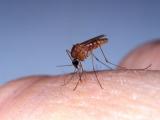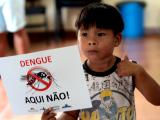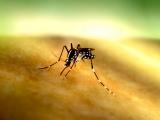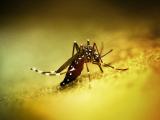Sep 10, 2007 (CIDRAP News) – A recent outbreak of the debilitating tropical disease known as chikungunya fever in northern Italy apparently marks the mosquito-borne infection's first foothold in Europe, according to European health authorities.
Europe has had scattered cases of chikungunya before, mainly in travelers from parts of Africa and Asia where the disease is established. But the outbreak this summer in Italy's Ravenna province was spread by mosquitoes, according to a report published Sep 6 by Eurosurveillance Weekly.
"The current outbreak of chikungunya fever in northeastern Italy . . . marks the first recorded occasion that this virus has been transmitted by mosquitoes within Europe," the report states.
There is a possibility that the same thing could happen in the United States, since the two mosquito species that can spread the virus are found in the Southeast, according to an official with the US Centers for Disease Control and Prevention (CDC). But he said the likelihood of that is "relatively low."
Chikungunya usually causes fever, headache, fatigue, nausea, vomiting, muscle and joint pain, and a rash, according to the CDC. The disease is not life-threatening. Symptoms typically last a few days to 2 weeks, but fatigue or joint pain sometimes lingers for weeks to months, the CDC says.
The name "chikungunya" is Swahili for "that which bends up," a reference to the stooped posture associated with joint pain. There is no vaccine or specific antiviral treatment for the illness, which is caused by a virus of the genus Alphavirus.
Italy reports 166 cases
In the Italian outbreak, officials recorded 166 cases, most of them in two neighboring villages, according to Eurosurveillance. The outbreak is believed to have started after a man from India fell ill while visiting one of the villages in late June. The epidemic peaked in the third week of August.
The Eurosurveillance report does not say whether the index case-patient reported mosquito bites, but an online news report by the journal Nature says authorities think the virus "spread among the dense population of tiger mosquitoes" after the man's illness.
It was not until the end of August that investigators zeroed in on the diagnosis of chikungunya, using serologic testing and polymerase chain reaction (PCR), the Eurosurveillance report says. In addition, the virus was detected in local Aedes albopictus mosquitoes, also known as tiger mosquitoes, by PCR.
Eurosurveillance says the disease was mild and self-limiting in most patients, but joint pain was intense and often persisted after the fever abated. One patient, an 83-year-old man with severe underlying health problems, died.
The report says A albopictus is found in several other European countries, including Albania, France, Belgium, Montenegro, Switzerland, Greece, Spain, Croatia, the Netherlands, Slovenia, Bosnia, Herzegovina, and possibly more, suggesting a potential for further spread of the disease.
But scientists quoted in the Nature story said they don't know enough to predict whether the disease will spread to other European countries that have A albopictus.
"We don't even know why West Nile disease [another mosquito-borne viral illness] became endemic in North America but not in Europe, even though the virus and the vector are present on both continents," Evelyn Depoortere, an epidemiologist at the European Centre for Disease Prevention and Control in Stockholm, told Nature.
Antoine Flahault, who coordinates French research on chikungunya, called the Italian outbreak a "world first" outside the tropics, according to a Sep 7 BBC News report. Writing in the journal Quotidien du Medecin, he said the virus's movement into Europe was "worrying without being alarming."
Flahault suggested that the very dense mosquito population in and around Ravenna had spurred the outbreak, according to the story. He said the Italian climate has grown warmer and more humid, favoring the proliferation of mosquitoes.
Could disease spread to the US?
The United States has recorded some chikungunya cases among returning travelers, but no transmission of the disease, according to Dr. Ned Hayes, a medical epidemiologist with the CDC's Division of Vector-Borne Infectious Diseases in Fort Collins, Colo. But he said the two mosquitoes that can spread chikungunya—A albopictus and Aedes aegypti—are found in the southeastern United States.
"For chikungunya to be transmitted in the US, you need to have a viremic person or mosquito introduction in an area where both susceptible persons and the predominant mosquito vector are present," Hayes said. "Both those conditions exist in the US, so I think the importation of chikungunya is a concern."
But the risk of indigenous transmission is "probably relatively low in the continental United States," mainly because of socioeconomic and lifestyle differences that tend to limit the spread of mosquito-borne viruses like chikungunya, dengue, and yellow fever, Hayes said. For example, air conditioning and window screens help protect people from heavy exposure to mosquitoes, he explained.
However, areas where dengue transmission already occurs or is possible may be more vulnerable to chikungunya, Hayes said. Such areas include parts of Florida and Texas, plus Puerto Rico and the US Virgin Islands.
If chikungunya did gain a toehold in the United States, it would be unlikely to spread across the continent, in Hayes's opinion.
"It's possible, if the virus should become endemic in, say, the southeastern US, that it could provide a locus for spread to other parts of the country, but I wouldn't think it would spread like West Nile virus," he said. Birds have helped spread West Nile across the continent since the disease emerged in New York City in 1999.
Chikungunya does not commonly spread from person to person, Hayes said. However, it can spread from a pregnant woman to her fetus, and it could probably be spread via blood donated by an infected person, he said. But infected people have the virus in their blood for only a short time.
Hayes said the key message is that people should be aware of mosquito-borne illness risks, especially when traveling, and take steps to protect themselves from bites. Travelers who have a fever on returning to the United States should seek medical attention and inform health authorities of any infection.
Epidemics described as cyclical
The World Health Organization (WHO) reports that major chikungunya epidemics "appear and disappear cyclically," with quiet periods usually lasting 7 to 8 years but sometimes as long as 20 years.
In recent years, epidemics have occurred in India and on various Indian Ocean islands, including Comorros, Mauritius, Reunion, and Seychelles. A major epidemic struck Reunion, a French territory, between March 2005 and June 2006, sickening an estimated 266,000 people, about 35% of the population, according to Eurosurveillance. Several hundred cases occurred in France during the Reunion epidemic, but nearly all were linked to the island epidemic, the report says.
Chikungunya clinically resembles dengue fever, which is widespread in the tropics, according to the WHO. The chikungunya virus was first identified in 1953 during an epidemic in Tanzania, according to the CDC.
Although the Italian outbreak was associated with A albopictus, the primary vector for chikungunya is A aegypti, the yellow fever mosquito, the CDC says.
See also:
Eurosurveillance report
http://www.eurosurveillance.org/ViewArticle.aspx?ArticleId=3260
WHO Southeast Asia information sheet on chikungunya
http://www.who.int/mediacentre/factsheets/fs327/en/
CDC information on chikungunya
http://www.cdc.gov/chikungunya/
CDC information on A albopictus
http://www.cdc.gov/ncidod/dvbid/arbor/albopic_new.htm



















